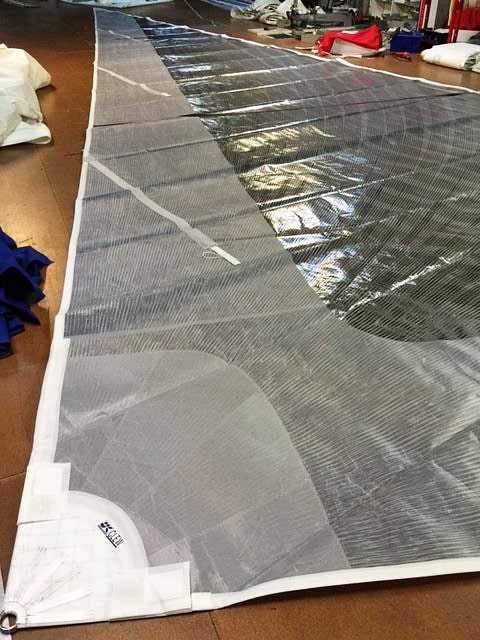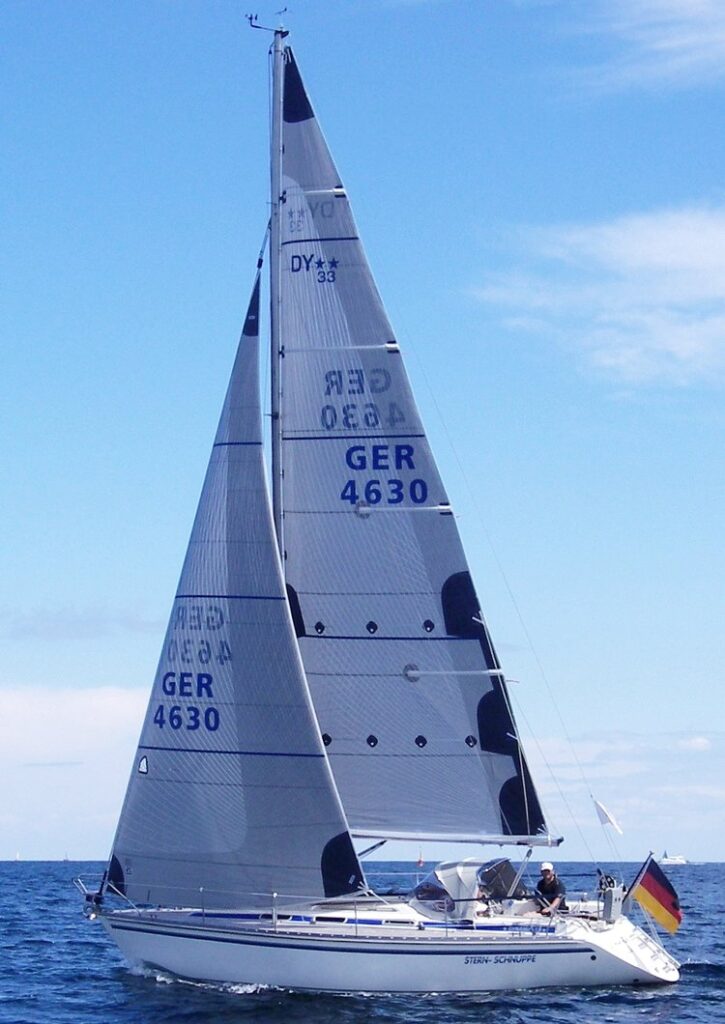
Racing Headsails: X-Drive Silver

X-Drive sails made with S-Glass reinforcing yarns are a good solution for owners on a budget or who prefer sails that look white while having performance close to sails made with carbon fiber. As the chart shows, S-Glass yarns have nearly three times the Modulus (ability to resist stretch) and Tenacity (breaking strength) than those used in woven polyester (Dacron) sails.
S-Glass yarns are less expensive than carbon and they are heavier, but on smaller sails, the lower stretch resistance and increased weight are not as noticeable.
UK Sailmakers’ fiber laying machine puts down up to 11 tapes at a time, which means there are hundreds of continuous load path fibers on the sail. The almost complete coverage of the sail’s surface with S-Glass yarns prevents the sail from getting wavy or unfair. Because of the nearly complete coverage of the sail with S-Glass fibers, the strength requirement of the base laminate is reduced. This means we can use lighter and less expensive laminates and the savings are passed on to the sailor.
To reduce glare and to give the sail a more performance look, laminates with a grey taffeta can be used.
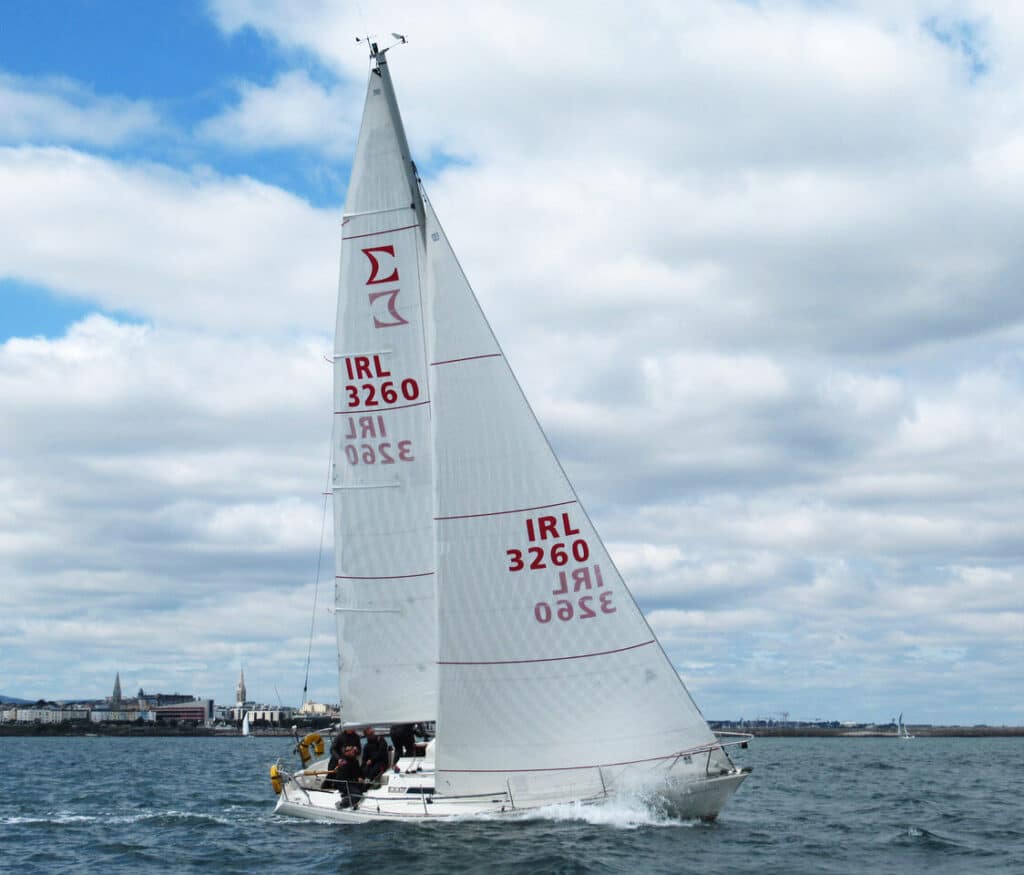
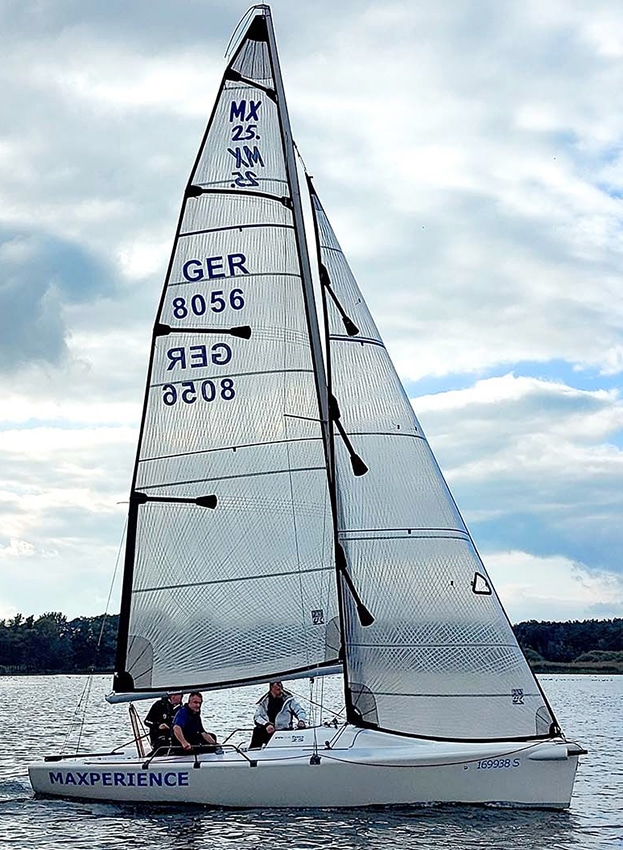
The S-Glass yarns used in X-Drive sails are dry—not coated in glue—which keeps them from becoming brittle. Keeping the yarns dry improves their flexibility.
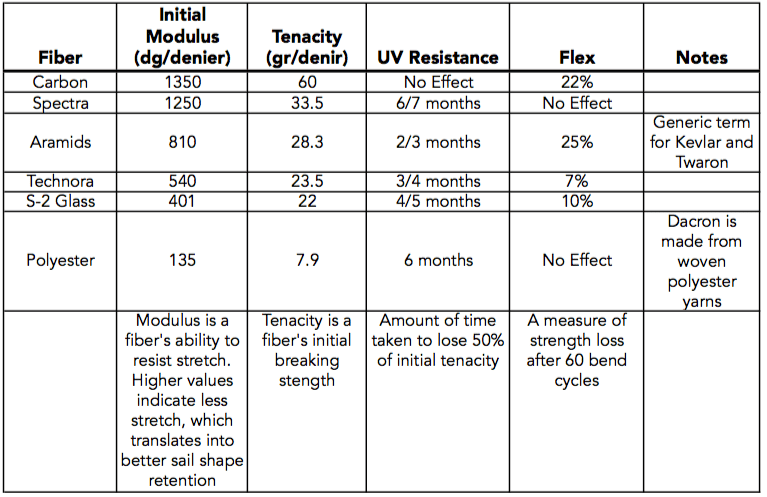
Extra Durability With Lite Skin® or Taffeta
To help protect today’s sails and extend their peak performance lives, UK Sailmakers can build all our X-Drive racing sails where one or both sides of the laminate is fully covered with a lightweight finely-woven polyester taffeta. Not only does taffeta protect the film layer from abrasion, but it also prevents cracking of the film and reduces creasing. While taffeta doesn’t add any strength, it does make sails last longer. We also offer the option of putting a layer of taffeta over the X-Drive yarns only on the leech of the sail as shown below.
Lite Skin, is a thin, lightweight sheet of random, non-woven, polyester filaments applied to what will be the outer sides of the sail giving the sail a mat-black or dark grey appearance. Lite Skin is a proprietary product of Dimension-Polyant Sailcloth.
Taffeta is a lightweight, finely woven polyester cloth. Taffeta is slightly heavier than Lite Skin but it is also more rugged. Taffeta is available in white or a medium grey color.
Partial Taffeta Options
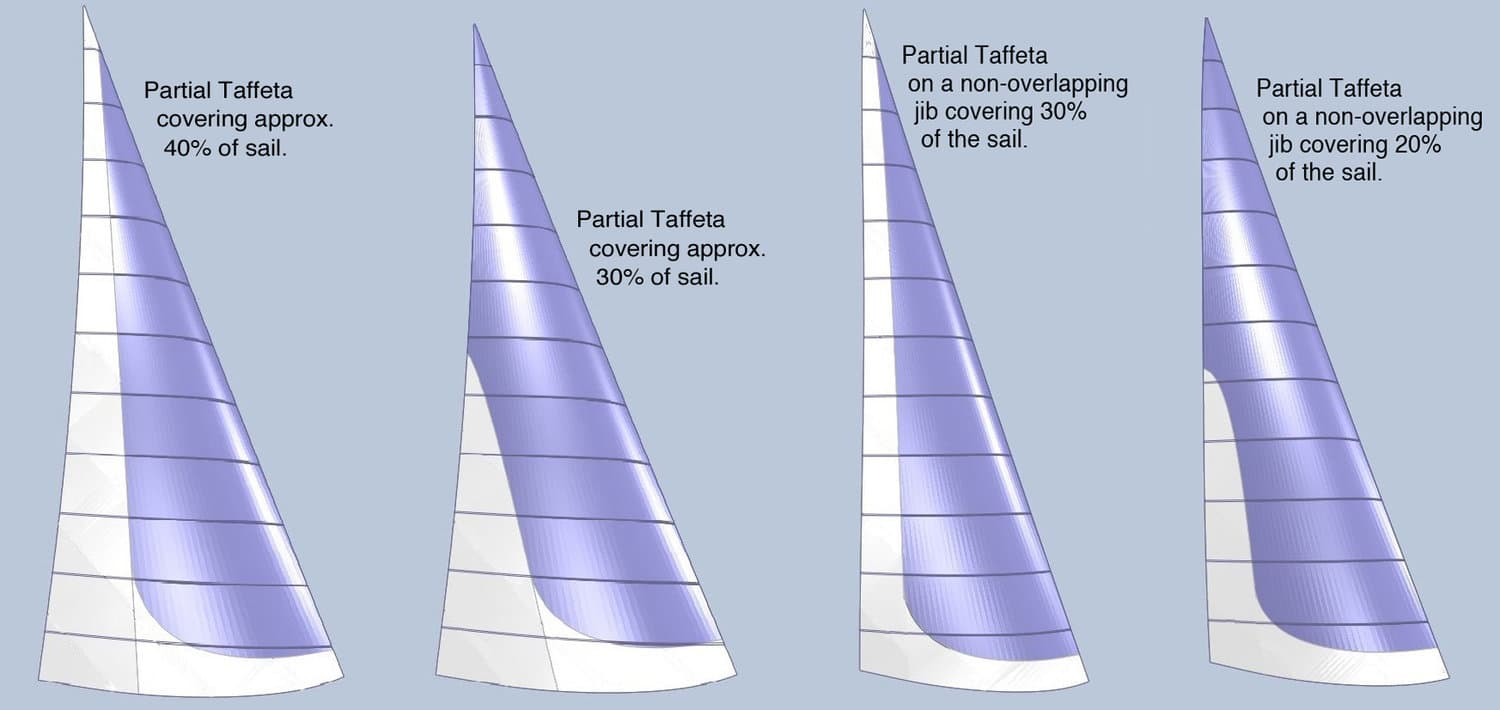
The leech of any sail benefits from having extra taffeta protection; when a sail luffs, the leech is the area most exposed to flogging, abrasion, and potential damage. This is particularly the case for boats with overlapping genoas that get dragged across shrouds and the mast in every tack.
UK Sailmakers will work with you to determine the right amount of taffeta to add to your sails based on your boat, the kinds of sailing you do, and your budget. Having both sides covered with taffeta makes a sail more durable, but also would make the sail heavier. UK Sailmakers offers a Partial Taffeta option to save weight and cost.
